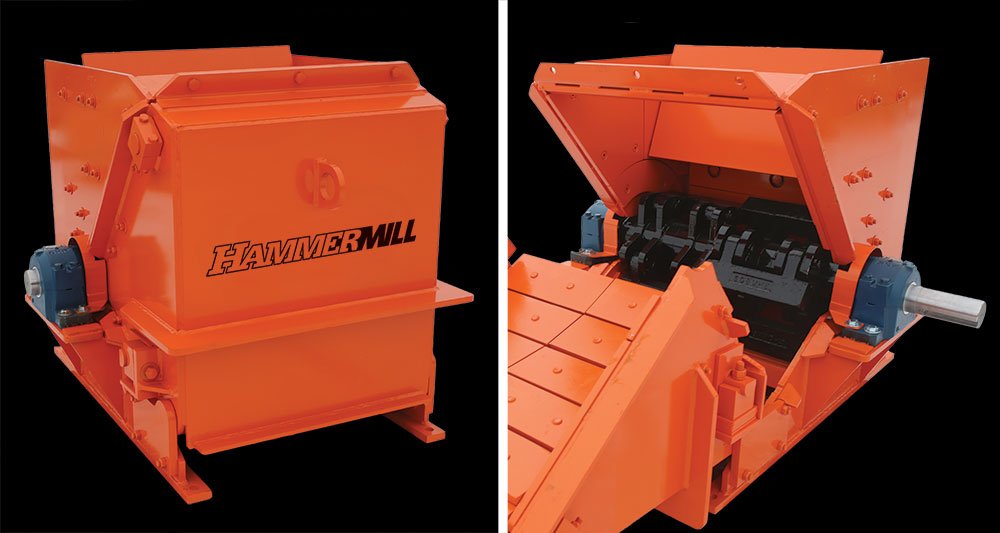A hammermill is one of several types of crushing machines, including impact crushers, jaw crushers, and cone crushers, that is manufactured for the purpose of processing raw materials to reduce them in size. In the crushing industry, there are two types of forces used to reduce the size of materials: impact forces and compression forces. Hammermills and impact crushers use an impact force while jaw crushers and cone crushers use a compression force.
As one of the earliest types of crushing machines to exist, the hammermill has evolved over time to become a very versatile piece of equipment. In the aggregate crushing industry alone, the hammermill is able to crush a wide range of materials, including asphalt, concrete, brick, limestone, and coal, and especially used to process low-abrasive material.
The nature of a hammermill is similar to that of an impact crusher in that it relies on a striking force to fracture and reduce material like aggregate. However, the hammermill is distinguished by its rotor that features a series of hammers, instead of blow bars, that hang loosely, ready to be spun. Once the rotor is in operation, the resulting centrifugal force sends the hammers outward, spinning rapidly in order to crush the material being processed.

In the upper portion of the crushing chamber, aprons line the top of the machine. As aggregate is fed into the hammermill and comes into contact with the swinging hammers, it is propelled into these linings that provide a secondary source of impact to further fracture and reduce the material. Just as well, as rocks move through the machine, it is expected that they strike and contact against each other, resulting in even further reduction.
Depending on the type of material needing crushed, the hammers themselves can vary in number, size, and style. In a hammermill used for aggregate crushing, it is typical that the hammers are fewer in number, large, and flat to encourage optimal size reduction. Hammers are typically cast in a solid manganese but can be manufactured from a broad set of metallurgies subject to the needs of the job.
In the lower portion of the crushing chamber, grates line the bottom of the machine. As aggregate and other materials are crushed by the hammermill, they exit the crusher through these grates which are available in a wide range of designs to ensure precise size reduction. Hammermill grates can produce specified top-sized materials with minimum fines, and they can also be interchanged depending on the application.
Eagle Crusher Hammermills are designed for maximum strength at a minimum weight. They are ideal for use when budget and space are limited, particularly as they require a lower initial investment than horizontal shaft impactors (HSI), or when portable mounting is limited. Their replaceable, heavy-duty grate bars assure precise product sizing from 4-inch minus down to 100% minus 3/16-inch.
For complete Eagle Crusher Hammermill product specifications, please visit: its product page.
Serious Projects Demand Eagle Crusher.
Eagle Crusher consistently leads the industry in new product innovations. We stand by our products with unsurpassed service and support to make your job easier.
Get serious. Get Eagle Crusher.
• Durability and longevity
• 24-hour parts and service
• American made
• Highest productivity and profits
• High resale value
• Celebrating 100+ years of service



